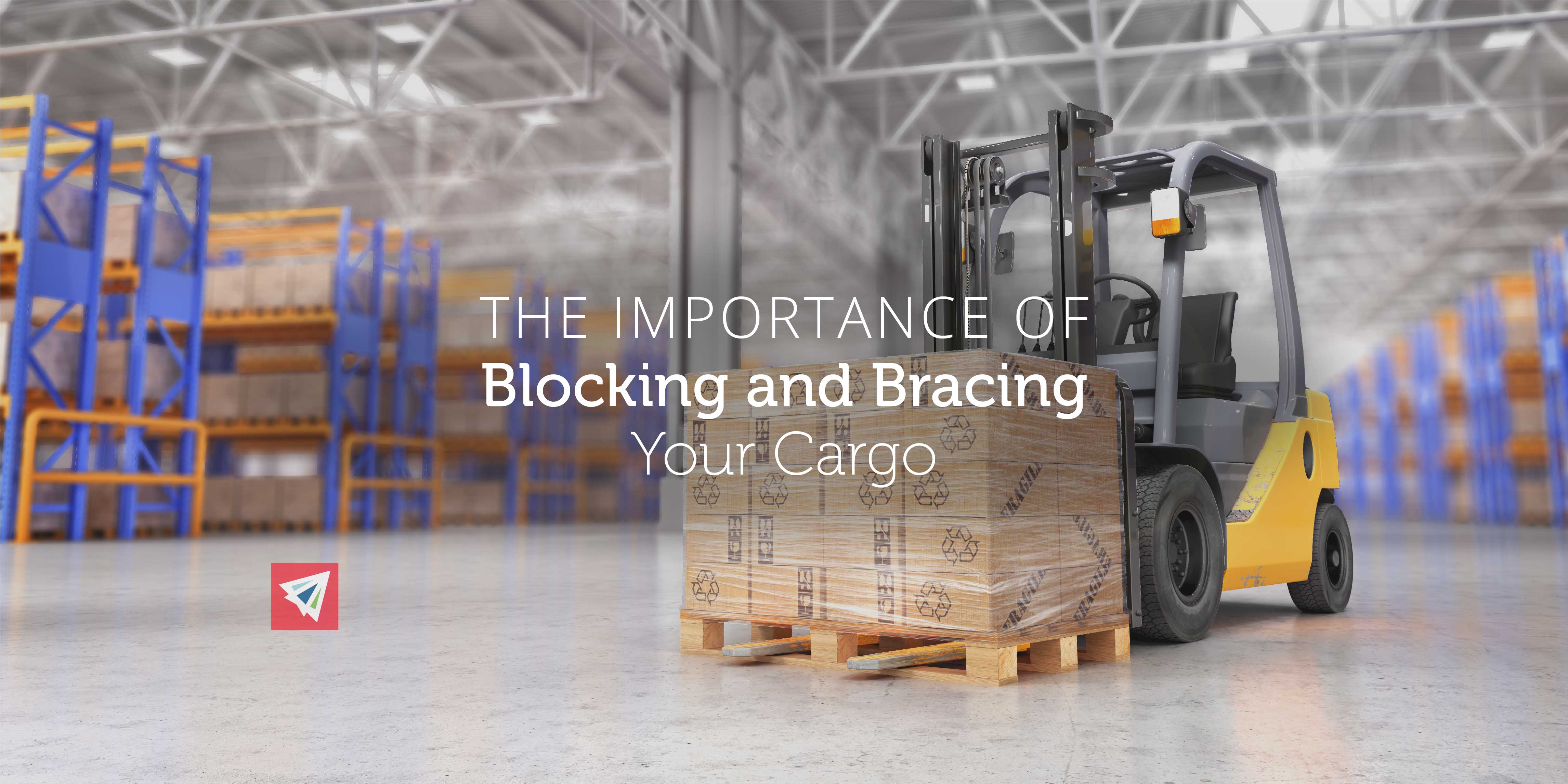Getting your cargo onto a shipping container often feels like the last “concern” you should have in the shipping process. However, simply because your goods have finally made their way into an international shipping container and are sitting on a vessel ready to move doesn’t mean they are shielded from damage during the transport. Blocking and bracing can help you avoid this.
Securing Your Cargo
In studies conducted by Interlog USA’s marketing departments, the number 1 complaint issued by logistics managers and other transportation controllers was damaged goods. You can rarely trust that truckers, ports, draymen, and anyone else touching your cargo while in transit will be as gentle with it as you’d prefer, but there are precautions you can take to ensure your cargo remains safe while traveling. One method of securing your cargo is blocking and bracing.
The Importance of Blocking and Bracing
Blocking and bracing cargo is a way of securing cargo to keep if from being damaged in transit. When goods are loaded onto a container, they are highly susceptible to sliding around in their container (assuming your cargo does not max out the internal width and length dimensions of a shipping container.) The goal of blocking and bracing your cargo is to keep the goods from shifting length-wise (front-to-back.)
Cargo accident reports indicate that 25% of all damaged goods incidences have been linked to improper securing of cargo. Blocking and bracing cargo involves the use of wooden and metal beams to hold cargo in its place whilst in its shipping container. This method greatly reduces your risk of damaged goods and helps to eliminate accountability in the case of a damaged cargo incident. Taking these precautions can help you to steer out of harms way. In addition, it is always a good idea to insure your cargo, and know your insurance options. Here are general guidelines to blocking and bracing your cargo.
How to Block and Brace a Container
There is no one way to block and brace cargo – in fact, it’s a rather loose term that can describe any cargo that has been kept in place by means of wooden, plastic, or medal obstacles to keep cargo from sliding. Although there are no specific legal requirements, these are a few recommendations as to how you can secure your cargo.
Blocking and Bracing Units with Wheels
Whenever shipping units with wheels (cars, lawnmowers, snowblowers, bikes, etc.) it is a good idea to block and brace the cargo in two steps. The first step involves inhibiting the wheels from spinning. Whether you use straps, blocks or bars within the wheel, or custom-made transportation brakes, securing the wheel itself before securing the cargo is a helpful added security measure. The second step of securing wheeled units is to secure the cargo to the container. After moving the wheeled unit into the container, trap the object both vertically and horizontally with bars that are secured to the container.
A common mistake is creating a rig to block and brace cargo without fully securing the bracing materials to the container itself. Think about it this way: In order for your blocking and bracing to be effective, the materials used in blocking and bracing must be secured to the container better than the security of the cargo itself. In the instance of a container being tipped, the blocking and bracing inside must have the ability to hold back the weight of whatever cargo is aboard.
Combining Wheeled and Non-Wheeled Items
If you are shipping wheeled and non-wheeled units in the same container, it is imperative that you block and brace them correctly. Improperly securing the cargo could wreak havoc on your non-wheeled cargo. All non-wheeled items aboard a container with a wheeled unit cannot be placed on top of the wheeled cargo. They also may not be wedged between the wheeled cargo and the sides, front, or back of the container. For proper security of the non-wheeled cargo, it should be placed in its own cage and separately blocked and braced to the container.
Approach it as though you are securing the two units separately before they are placed in the container, and then blocking and bracing the units to the container separately. This will ensure maximum security since it mitigates the risk of one blocking and bracing system failing.
Other Common Methods for Blocking and Bracing
There are a couple extra options you have to protect your cargo besides geometrically placing metal and wooden beams to inhibit movement of your cargo. Some containers have metal hooks on the inside near both ends of the container. These can be of use for attaching ratchet straps to to hold cargo from moving or for holding blocking and bracing systems in place. Netting is also a common method to ensure further security of your cargo. If you don’t fill the entirety of your container and want to keep your cargo from sliding off bracing systems in the off-chance of a tipped container, you can put a cargo net all the way up the sides, front, and back of the container. One last tip for securing your cargo is to utilize the wooden floor of your shipping container. Blocking and bracing systems can be drilled to the wooden bottom of the container to keep them from any movement.
Picking the Best Option
As you may have expected – it all depends on your situation. Shipping vehicles is a completely different story than pallets, breakable/fragile goods, heavyweight objects, and oddly shaped cargo. The overarching focus of blocking and bracing is two-fold: 1) Ensure your bracing systems are locked to the container as securely as possible, and 2) Ensure the bracing systems do not allow for any movement of the cargo they hold. Keep these two steps in mind and you are likely to have a smooth, damaged goods-free shipment.

4 thoughts on “The Importance of Blocking and Bracing Your Cargo”